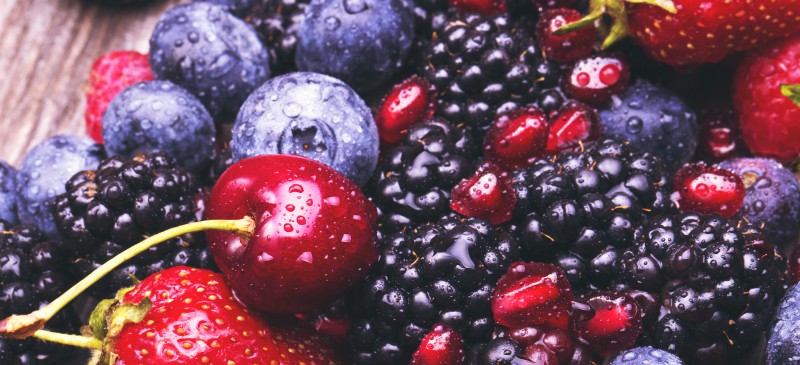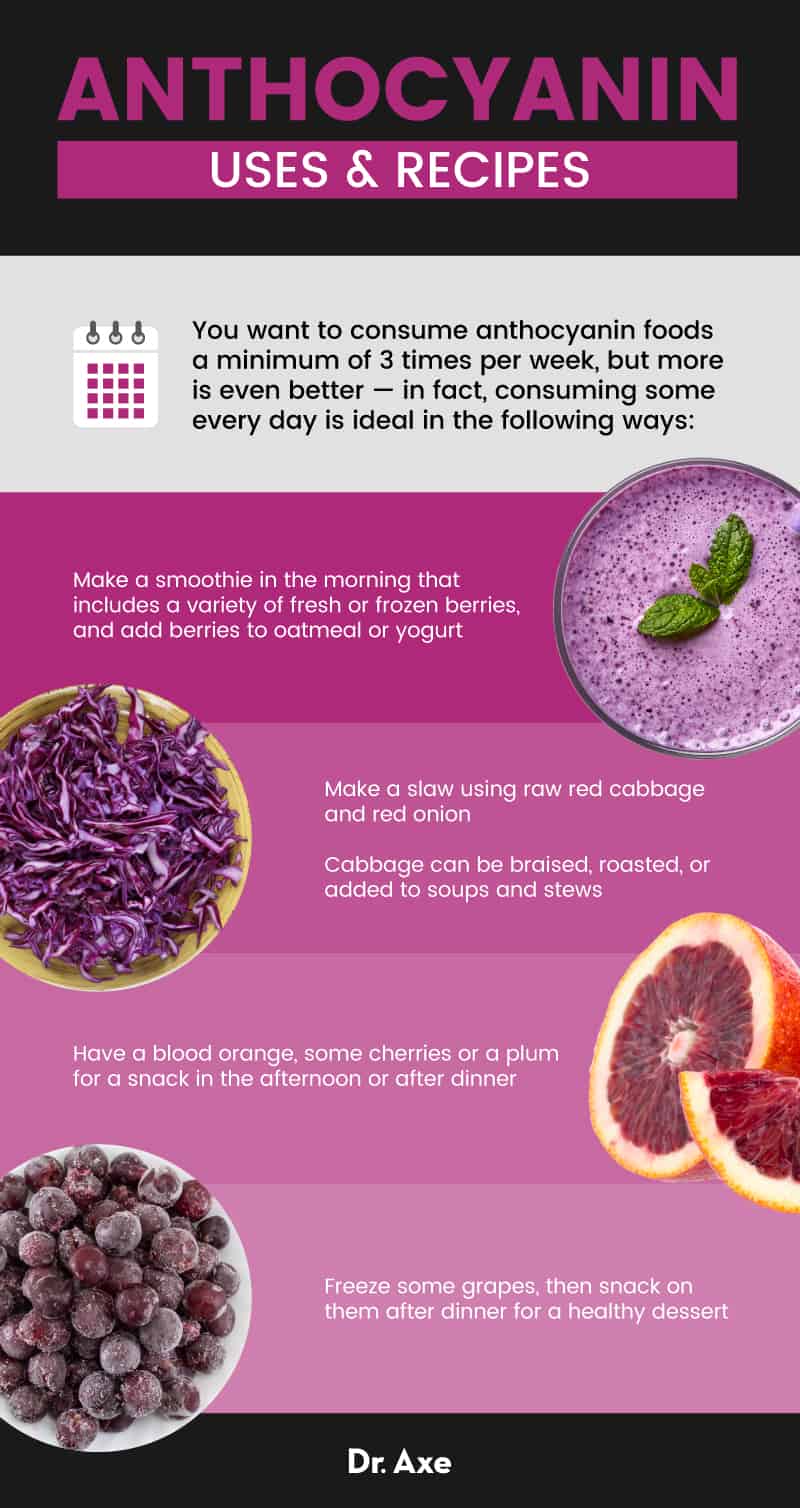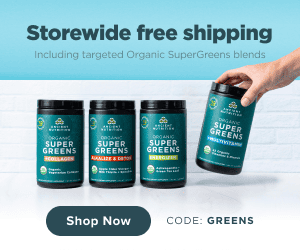This Dr. Axe content is medically reviewed or fact checked to ensure factually accurate information.
With strict editorial sourcing guidelines, we only link to academic research institutions, reputable media sites and, when research is available, medically peer-reviewed studies. Note that the numbers in parentheses (1, 2, etc.) are clickable links to these studies.
The information in our articles is NOT intended to replace a one-on-one relationship with a qualified health care professional and is not intended as medical advice.
This article is based on scientific evidence, written by experts and fact checked by our trained editorial staff. Note that the numbers in parentheses (1, 2, etc.) are clickable links to medically peer-reviewed studies.
Our team includes licensed nutritionists and dietitians, certified health education specialists, as well as certified strength and conditioning specialists, personal trainers and corrective exercise specialists. Our team aims to be not only thorough with its research, but also objective and unbiased.
The information in our articles is NOT intended to replace a one-on-one relationship with a qualified health care professional and is not intended as medical advice.
Anthocyanin Benefits the Brain, Eyes & Immune System
September 26, 2023

Anthocyanins are just one of the more than 6,000 different types of flavonoid polyphenol phytonutrients! Other types that have similar properties to anthocyanin include flavanols, flavones, flavanones, flavan-3-ols and isoflavones.
The reason we hear more about anthocyanins compared to other related antioxidants is because they are widely available in many fruits and veggies. Experts believe that most people who eat a varied, healthy diet probably consume nine times the amount of anthocyanins compared to other dietary flavonoids.
Most nutrient-dense plant foods provide many types of flavonoids, although they tend to be highest in just one or two.
Since anthocyanins cause foods to be red, purple and blue, do grapes contain them? How about eggplant and blueberries? The answer is yes, all of these foods plus many more provide us with anthocyanins and a number of other important nutrients too.
What are the benefits of eating nutrient-dense foods that provide anthocyanin? Some of the most important include protecting yourself against developing cardiovascular disease, cancer and neurological disorders.
What Are Anthocyanins?
Anthocyanins are a type of flavonoid, a family of powerful antioxidants that fight the effects of aging and oxidative stress. To date, more than 1,000 different anthocyanins have been identified.
What is the color of anthocyanins, and what does this tell us about where we can find them? The definition of anthocyanins is “blue, violet, or red flavonoid pigments found in plants.”
In regard to anthocyanin’s structure, anthocyanins are water-soluble, glycoside pigments that can vary in color depending on their specific pH. The exact type of anthocyanin that a fruit or veggie contains is partially what determines how deeply red, purple, violet, blue or even orange it will be. This is one reason why the same food, such as eggplants or onions, can come in many different shades.
Here’s the cool thing about most antioxidants: Not only do they benefit you when you eat them, but they also benefit the plants that contain them too. Plants produce phytochemicals like anthocyanin as a protective mechanism, and phytochemicals help build plants’ resistance and protect them from being destroyed.
For example, anthocyanin can offer a plant protection from being eaten by predators (like bugs, birds or rodents) and from environmental stressors, like ultraviolet light, cold temperatures and drought.
Anthocyanin Foods
Flavonoid phytochemicals are predominantly found in foods/beverages, including teas, honey, wines, fruits, vegetables, nuts, olive oil and cocoa.
Which foods are high in anthocyanins? The best way to obtain anthocyanin is to eat foods that are red, blue, purple, violet and orange (or some combination of these colors).
When an anthocyanidin molecule is paired with a sugar, this is called a glycoside, which is how colors/pigments are expressed in plant foods.
What veggies and fruits contain anthocyanins? The top anthocyanin foods include:
- Berries, especially black currants, elderberries, cranberries, tart cherry juice, blueberries, black raspberries, blackberries, huckleberries and strawberries. The freshly squeezed juices of these fruits are also sources. Certain “superfood” berries also contain anthocyanin, including elderberry, hawthorn berry, loganberry and açai berry.
- Red and purple grapes, especially Concord grapes
- Cherries
- Pomegranate (including the juice)
- Red wine
- Eggplants (especially the purple type, as opposed to white)
- Black plums
- Blood oranges
- Red cabbage
- Red onion
- Purple sweet potatoes
- Blue corn
- Purple and black carrots
- Edible flowers and herbs, including purple mint, purple passion flower, purple sage, butterfly pea, common violet, giloy and lavender
- Certain types of apples, such as red delicious
The exact amount of anthocyanin found in these foods can vary greatly depending on variables like where and how the food is grown, whether it’s organic or not, and how fresh it is when eaten.
You may have noticed that another purple food, beets, are not the list. Do beets contain anthocyanins? Beets may be purple, but this is actually due to betalain pigments, not anthocyanins.
Beets are still a very healthy food, however, so don’t shy away from eating them. Betalain pigments can also make foods violet or red. They are also antioxidants, just like anthocyanins, and have similar benefits, including fighting oxidative stress.

Benefits
What do anthocyanins do inside the body once we consume them?
We still have a lot to learn to about the exact bioactivity, uptake, absorption and roles of phytonutrients, including anthocyanin. We do know that anthocyanins seem to play a role in fighting free radical damage, which leads to aging and the formation of numerous diseases.
Beyond their capacity to fight free radicals/oxidative stress, anthocyanins have many other effects when it comes to protecting cells, tissues and vital organs that we’re still uncovering. For example, research suggests that anthocyanins have positive effects on gut health when they interact with microflora, which can help decrease inflammatory markers associated with many chronic diseases — plus they can support hormonal balance.
1. Protection Against Cardiovascular/Heart Disease
Overall, many studies have found that having just one to two (or ideally more) servings of anythocyanin-rich foods per day can protect you from problems related to high blood pressure and arteriosclerosis. While it’s great to have antioxidant-rich foods every day, even having them several times per week can improve your health.
One finding from the Iowa Women’s Health Study, which included more than 34,000 postmenopausal women, found that women who consumed anthocyanin-rich strawberries and blueberries once per week or more experienced significant reductions in risk of death from heart disease/coronary artery disease.
Another large body of research from the Nurses’ Health Study I and II, which followed over 46,000 women and 23,000 men for more than a decade, found evidence that the those with the highest intakes of anthocyanin (especially from blueberries and strawberries) had a significantly decreased risk for developing hypertension, myocardial infarction and/or having a heart attack compared to those with the lowest intake.
This was true even after controlling for other factors like exercise level, family history and body mass index.
Anthocyanin benefits for diabetes and pancreatic disorders have also been unearthed in recent years, and again the efficacy is attributed to the multiple, simultaneous biological effects these pigments cause in the body, including prevention of generation of free radicals, decreased lipid peroxidation, reduced pancreatic swelling, and decreased blood sugar concentrations in urine and blood serum.
2. Improved Immune Function
Anthocyanin bioflavonoids may provide protection from DNA damage and lipid peroxidation — plus they have anti-inflammatory effects and help boost production of cytokines that regulate the immune responses.
They have also been shown to support hormonal balance by reducing estrogenic activity, help regulate enzyme production that aids nutrient absorption, and strengthen cell membranes by making them less permeable and fragile.
3. Protection Against Cancer
Research suggests that anthocyanin can decrease the risk of developing various types of cancer due to its antioxidant, anticarcinogenic and anti-inflammatory effects. This has been demonstrated in both in vitro and in vivo research trials in humans and animals.
Studies show that anthocyanins have the ability to naturally fight cancer by blocking cell proliferation and inhibiting tumor formation by interfering with the process of carcinogenesis. One way anthocyanins inhibit tumorigenesis is by blocking activation of mitogen-activated protein kinase pathways.
4. Improved Cognitive Function
Studies have found that diets high in antioxidants like anthocyanin lead to reversal in certain age-related deficits that affect neural and behavioral parameters, including memory and motor functions. Anthocyanins have been credited with protecting memory, coordination and neural function in older populations.
One study out of Korea found that administration of isolated anthocyanins from purple sweet potato enhanced cognitive performance and inhibited lipid peroxidation in brain tissues in mice.
Another review on the effects of berry anthocyanins on cognitive performance and disease risk markers concluded that “this review provides evidence for the beneficial effects of berry anthocyanins on cognitive performance as memory improved.”
5. Enhanced Exercise Performance and Recovery
Antioxidants seem to improve physical performance by lowering exhaustion and the negative effects of excessive oxygen and radical accumulation during physical activities. In one double-blinded clinical trial that involved 54 female and male athletes, when one group was given 100 milligrams of anthocyanin pills per day for six weeks, the participants in that group were found to experience a significant improvement in their VO2 max (maximal oxygen consumption) compared to the second group that received 100 milligrams of placebo pills daily.
Some studies have also found that fruit juices that contain anthocyanin, such as 100 percent tart cherry and blueberry juices, have antioxidant and anti-inflammatory effects that wind up positively influencing muscle damage following exercise and the ability to properly recover.
There’s even evidence from animal studies that anthocyanins consumed as part of a high-fat diet can help inhibit both body weight and adipose tissue increases.
6. Enhanced Vision and Eye Health
Anthocyanin has been shown to help enhance night vision and overall vision by protecting the eyes from free radical damage. One study found that oral intake of anthocyanosides from black currants resulted in significantly improved night vision in adults.
Research suggests that enhancement of rhodopsin regeneration and protection against inflammation are at least two mechanism by which anthocyanins improve sight and protect the eyes.
In addition, some of the conditions that research suggests anthocyanins may help prevent include:
- Cardiovascular disease and risk factors, such as high blood pressure and hardening of the arteries
- Cancer
- Impaired immune function
- Diabetes
- Neurological disorders, such as Alzheimer’s disease and dementia
- Symptoms of poor cognitive function, including poor memory and trouble concentrating
- Fatigue
- Poor recovery from exercise/physical activity
- Vision loss
- Obesity
Anthocyanin vs. Anthocyanidin
- Anthocyanin and anthocyanidin are subclasses of phenolic phytochemicals. They have similar benefits and uses but a different chemical structure. Anthocyanin is in the form of glycoside while anthocyanidin is in the form of aglycone.
- The most common types of anthocyanidins are cyanidin, delphinidin, pelargonidin, peonidin, petunidin and malvidin. Anthocyanidin is a reddish-purple (magenta) pigment and is found in berries and other red-colored vegetables, like sweet potatoes and purple corn.
- Anthocyanidins and anthocyanins are used as natural dyes and food-coloring agents. They also have use in pharmaceutical products given their various beneficial health effects.
- Both human and animal studies have found that anthocyanidins and anthocyanins possess strong antioxidative and antimicrobial activities. They can also help to improve vision and neurological health and protect against various diseases.
Supplements and Dosage
Is taking anthocyanin supplements as beneficial as eating anthocyanin foods? Overall, there’s still a lot to learn about the ways that supplementing with anthocyanins may be beneficial. As of now, experts recommend getting anthocyains from food sources rather than in isolated supplement form.
That being said, one review of 10 studies involving use of anthocyanin supplements found that supplementation significantly improved LDL cholesterol among diseased individuals or those with elevated biomarkers.
However, supplementing did not significantly affect other markers of cardiovascular disease. No adverse effects of anthocyanins were reported when adults were taking up to 640 milligrams per day.
Examples of anthocyanins that can be isolated and taken as supplements include those called cyanidin and pelargonidin. Cyanidin is an isolated glycoside, a subset of anthocyanin that can be taken in supplement form to support the immune system. Pelargonidin is another anthocyanidin that has a characteristic orange color.
These two supplements have been shown in some studies to to help fight oxidative stress and control blood glucose (sugar) levels.
Uses in Ayurveda and TCM
Long before scientific studies were conducted to isolate and investigate anthocynanin, foods containing this antioxidant were used in folk medicines around the world to improve health and fight disease. Traditional cultures have known about the healing effects of anthocyanin foods for centuries.
For example, historically, red, blue, black and purple foods have been viewed as remedies for conditions like liver disfunction, hypertension, vision disorders, microbial infections, fatigue, anxiety and diarrhea.
In Traditional Chinese Medicine (TCM), dark-colored plant foods that are blue or purple are said to help “break through patterns of stagnation.” In TCM, a food’s color tells a lot about its health effects.
Black foods are said to be warming and best for winter, while red foods are cooling and best for summer. Dark-colored foods also correspond with the element water and are linked to coolness and saltiness. They are said to support organs including the stomach, spleen and kidneys by improving the ability to store energy, balancing fluid metabolism and dispelling toxins.
Red foods, on the other hand, are associated with warmth, fire, summer, happiness and bitterness in TCM. Red foods are believed to support organs including the heart and small intestine. They help nourish blood, improve circulation, and reduce symptoms in people with anemia, palpitations, cold limbs, pale face, and lack of strength or energy.
In Ayurvedic medicine, red, purple and blue foods can be viewed as either warming or cooling. Grapes, cherries and oranges build heat, while berries, pomegranate, cabbage and eggplant reduce warmth.
All types of berries are especially valued in Ayurveda, since they are viewed as capable of reducing internal heat, soothing swelling, treating inflamed tissues and helping cool the blood.
In Ayurveda, foods also correspond with certain emotions. Red foods lift energy and fight lethargy and fatigue, while blue and black foods are calming and fight anxiety.
Side Effects
If you do wish to take anthocyanin in “supplement” form, it’s a good idea to drink 100 percent pure tart cherry juice, blueberry juice or pomegranate juice instead. These have been more widely studied than anthocyanin supplements and shown to have many benefits.
When purchasing anthocyanin capsules/pills, it’s important to buy from a reputable brand that lists the ingredients accurately on the label if you do go the supplement route.
One study found that over 30 percent of anthocyanin dietary supplements did not contain the fruit listed on the ingredient label, did not contain any anthocyanin at all or contained contents differing from those listed on the label. Another study found that the amount of anthocyanin in supplements can vary considerably, making it hard to know how much you are actually consuming and absorbing.

Recipes
The minimum amount of anthocyanin foods you want to have per week is about three servings (roughly one cup per serving), but more is even better. If possible, try to have some type of anthocyanin food every single day, whether it’s berries, tart cherry juice, red cabbage, red wine or eggplant.
Here are ideas for using anthocyanin foods in recipes:
- Make a smoothie in the morning that includes a variety of fresh or frozen berries. You can also add berries to oatmeal or yogurt.
- Make a slaw using raw red cabbage and red onion. Cabbage can also be braised, roasted, or added to soups and stews.
- Cook eggplant in tomato sauce with herbs and olive oil.
- Have a blood orange, some cherries or a plum for a snack in the afternoon or after dinner.
- Freeze some grapes, and then snack on them after dinner for a healthy dessert.
Here are recipes you can make at home using some of the top anthocyanin foods:
- Omega Berry Smoothie Recipe
- Blueberry Pudding Recipe
- Very Cherry Snack Bites Recipe
- Stuffed Cabbage Rolls recipe
- Eggplant Baba Ganoush Recipe
Final Thoughts
- Anthocyanin antioxidants are a type of flavonoid polyphenol, part of a family of powerful phytochemicals that fight the effects of aging and oxidative stress.
- Some of the many anthocyanin benefits that research has uncovered include fighting heart disease, cancer, memory loss and neurological disorders.
- Anthocyanin foods include berries (especially black currants, blackberries, blueberries, strawberries), eggplant, blood oranges, grapes, cherries, red onion, red cabbage and red wine.
- It’s recommended getting anthocyanins from foods whenever possible, rather than supplements. Drinking 100 percent tart cherry juice, pomegranate juice or blueberry juice (in small amounts) are other ways to add some to your diet.










